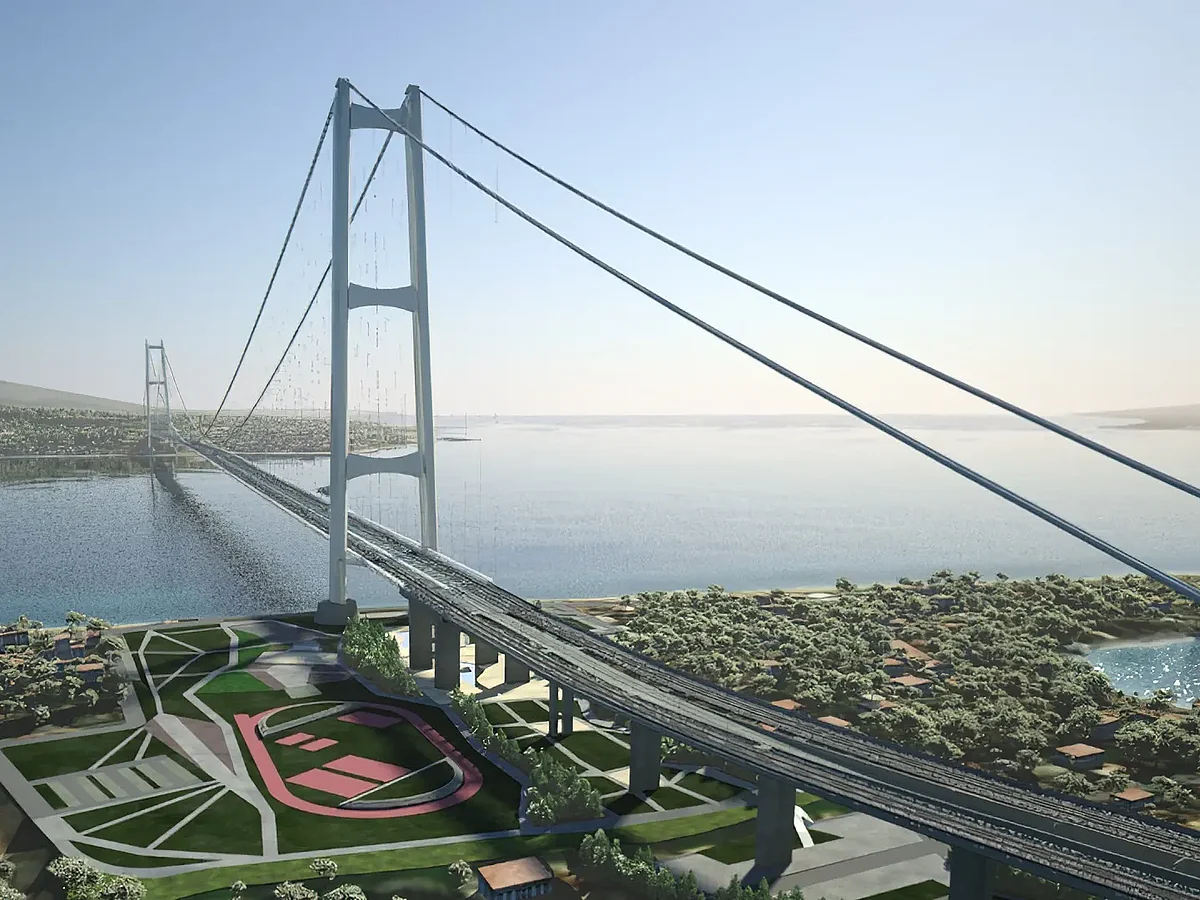This 3.3-km bridge span is about to smash world records — here’s the jaw-dropping plan
Ambitious $12.7-billion bridge project would have the world’s longest central span

The Strait of Messina in southern Italy, has historically posed a formidable barrier: strong currents and seismic activity.
Now, Italy is moving forward with a megaproject — a bridge set to become the world’s longest single-span suspension bridge.
It is designed to connect the island of Sicily with mainland Europe across this vital waterway that connects the Tyrrhenian and Ionian Seas.
The place is known for its breathtaking scenery.
The bridge’s key function: improve traffic and freight flow between the island of Sicily, home to 5 million people, and the southern region of Calabria.
It would be a hugely ambitious engineering project: the proposed 5km suspension bridge would have the longest central span (3.3km) in the world.
Expected to be completed in 2032, the bridge project is a bold statement of Italian engineering ambition.
It’s not a new idea
The vision has been centuries in the making.
With its monumental scale, engineering, and promise of regional revitalisation, it reflects both the dreams and challenges of uniting Sicily with the mainland — now finally “within reach”, Euronews reported.
It would also catalyse economic development in Italy’s traditionally less developed south, linking its people with continental Europe, according to The Structural Engineer.
The government under Giorgia Meloni, 48, Italian Prime Minister since 2022, has resurrected plans to build the bridge.
Bridge plan killed in 2013
Plans for such a bridge have been around for a long time but the idea was killed off in 2013.
Now, the government says it would be a boon to the economy and help reduce inequality between the south and north. Critics, however, point to the potential cost and environmental impact.
Engineering challenge
It would be a hugely ambitious engineering project: the proposed 5-km suspension bridge would have the world’s longest central span – 3.3km.
The plan: link the Sicilian city of Messina with Villa San Giovanni in Calabria, thereby connecting about 5 million with the rest of Europe.
For one, this would eliminate the need for slow ferry crossings and integrate southeastern Italy more completely into European transport networks.
Cost, significance
The Italian government has earmarked at least €12 billion (about $12.7 billion) for the project. This could rise further due to contingencies and project amendments.
This level of investment underscores the national significance of the endeavour.
The project is expected to generate thousands of direct and indirect jobs during construction and create long-term economic uplift for the region, which suffers from higher-than-average unemployment rates.
Who is the builder?
The bridge’s construction is coordinated by a consortium led by Webuild, a major Italian infrastructure company with an international presence in 50 countries and a reputation for executing large-scale projects.
The bridge over the Strait of Messina is a national industrial project t that is more important for the country than for us, a great work that can provide work and future opportunities to thousands of young people, and it also means investing in a special area of the country, connecting 5 million people with the rest of Europe.Pietro Salini, CEO of Webuild
Webuild boasts annual revenues of around €12 billion and manages a diverse portfolio worth €63 billion.
Pietro Salini, CEO of Webuild, told Italian daily Il Corriere della Sera: “The bridge over the Strait of Messina is a national industrial project that is more important for the country than for us, a great work that can provide work and future opportunities to thousands of young people, and it also means investing in a special area of the country, connecting 5 million people with the rest of Europe. We are waiting for the final decision shortly, the company is ready to start together with all the other Italian companies, from North to South”, he added.
The project also involves Stretto di Messina SpA (SdM), the state-owned project sponsor, while the Eurolink consortium — an alliance of leading engineering and construction firms — remains central to the execution, having refined the design since winning the original tender in 2005, as per ENR.
Webuild, which currently has an order portfolio of €63 billion (80% of which are from abroad), emphasises not only engineering excellence but also safety, training, and future employment, which are crucial given the project's scale and complexity, as per Agenzia Nova.
Design, technology, capacity
Type: Suspension bridge
Length: Total length of about 3.7 to 5 km (depending on route), with a record-breaking main span of 3.3 km (about 2 miles) — significantly longer than the previous world record held by Turkey's Canakkale Bridge, according to Construction Briefing.
Structure: Twin towers, each rising over 399 meters (1,112 feet), supporting the suspension cables and deck.
Capacity: Six road lanes (three in each direction) plus a central rail lane, allowing for both highway and high-speed rail transit, according to ENR.
Environmental and regional impact
The project integrates new tunnels, access roads, and even a subway line in Messina, designed to modernise local infrastructure as part of the larger regional revitalisation effort.
Supporters argue that, aside from economic benefits, the bridge could make Sicily a strategic logistics hub, linking goods from the Suez Canal to the heart of Europe via rail.
Status, expected completion
Current phase: As of early 2025, the design has been finalised and approved; permitting and environmental clearance procedures are underway.
Construction work is set to begin by the end of 2025, after several decades of political and economic delays, as per Domus Web.
Expected completion: Officials project the bridge will be operational by the early 2030s, with some projections targeting 2032.
Contingency clauses ensure that runaway costs or unresolved issues can prompt a project review or new bidding process.
Sign up for the Daily Briefing
Get the latest news and updates straight to your inbox
Network Links
GN StoreDownload our app
© Al Nisr Publishing LLC 2025. All rights reserved.